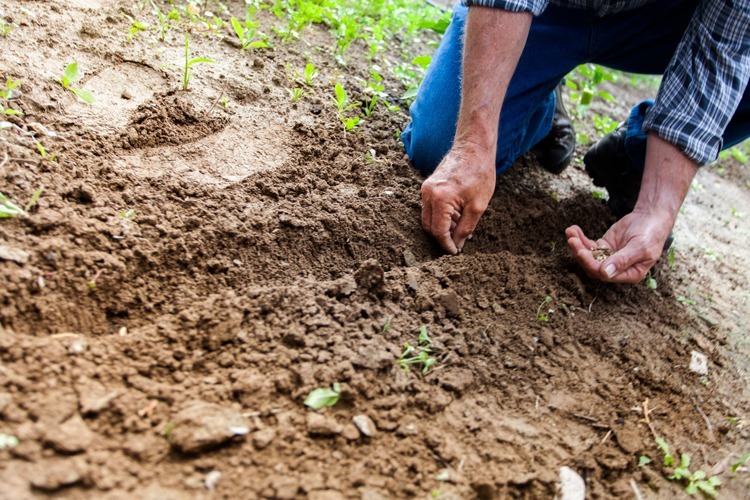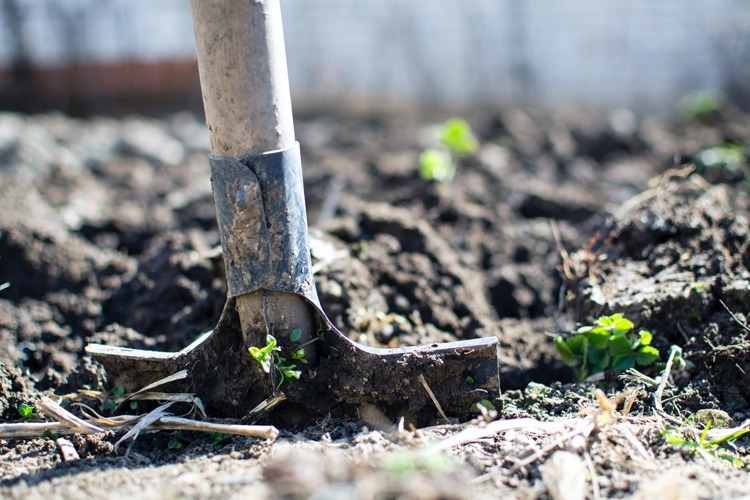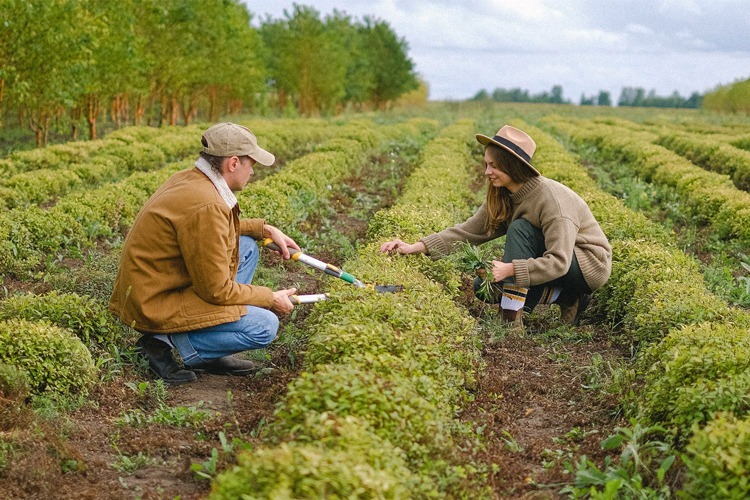Don’t let the size of your yard determine whether to start a garden. It doesn’t matter if you have acres upon acres of land or a postage stamp-sized yard; where there is dirt, there is a way. From planting a small herb garden to cultivating a healthy crop of fruits and veggies, there are bountiful ways to discover—and grow—your green thumb.
If you’re unsure of where to begin, you’ve come to the right place. Port Farms’ Five-Step Beginner’s Guide to Gardening will help you get growing in no time!
1. Know What You Can Grow
When beginning your gardening adventure, there are a handful of essential details to consider. First, you will want to think about three key things: Where you live (and what can grow best there); the size of your yard (and the amount of sunlight it receives based on where it’s situated); and the realistic amount of time you have to dedicate to gardening.
Second, consider reflecting on your garden’s purpose. Ask yourself: Will my garden be for sustenance? Decoration? Dedicated to producing occasional spices?
Gardening for sustenance is relatively common, which is why we’ve provided a list of fruits and vegetables that grow well according to their specific season:
| SPRING | SUMMER | FALL | WINTER |
|---|---|---|---|
| Carrots | Squash | Beets | Garlic |
| Tomato | Sweet Potatoes | Figs | Cauliflower |
| Cucumber | Eggplant | Kale | Collards |
| Honeydew | Corn | Key Limes | Green Onions |
| Peppers | Apples | Turnips | Radishes |
| Raspberries | Sorrels | Cranberries | Clementine |
For additional information, visit Seasonal Food Guide. They provide a comprehensive list of what produce is available in the U.S. according to different months of the year. You can find what’s in season near you by selecting your state, the month, and what produce you are trying to grow! Even if your food isn’t in season, you will still be able to select the produce and learn about its properties and uses.
Also, if you are planting a vegetable garden designed to feed your entire family, check out the U.S. Department of Agriculture’s Family Garden Planning Guide. The USDA claims that the estimated pounds needed per person (which is determined by the crop) divided by the approximate yield (lbs) per foot of row will equal the amount of rows (feet) to plant per person. When creating your garden, keep in mind that some vegetables take up more room than others! The same can be said for flowers, fruits, and shrubs.
2. Determine Your Gardening Spot
There are three baseline ingredients to any successful garden: dirt, water, and sunlight. While you can improve the quality of the dirt by incorporating store-bought fertilizers, starting a compost pile, and increasing the amount of water your garden gets with a hose or sprinkler, you can’t easily increase the amount of sunlight a particular area gets, so it’s crucial that you choose carefully.
Furthermore, avoid areas with lots of trees and shadows cast from the house. If you live in the Northern Hemisphere, a south-facing garden (south side of the house) is your best bet. Conversely, if you live in the Southern Hemisphere, you’ll want a north-facing garden.

On average, plants must have exposure to at least six to eight hours of sunlight. However, some vegetables such as peppers, corn, and tomatoes do well in direct sunlight for longer periods. If your yard lacks sunlight, consider veggies like cabbage, carrots, and root onions that do well with less light.
You’ll want to avoid any areas of your yard that are too moist from lack of drainage and air circulation. While water is essential, too much can cause mold, mildew, and fungi to grow.
If, for whatever reason, you’re digging deep (putting in sprinkler system lines, improving drainage, etc.), be sure to check with your area about who you need to contact before starting the project. For instance, in Pennsylvania, you need to call 811 to request a utility company representative to examine the area before you dig.
3. Choose Your Plants
After doing your research, choosing your location, and preparing the soil, you can select your plants and produce then begin planting!
As for flowers, Hydrangeas are great for curb appeal: they can be planted alongside the lining of your house or even in front of the home as colorful, decorative bushes. The same can be said for Vinca, Delphinium, Clematis, and Lily of the Valley, all of which are white flowers that may have a welcoming and calming effect. If you’re looking for something that demands a little attention, plant one of the following red flowers: Roses, Pentas, or Zinnias!

If it’s your first time growing produce, there are various fruits and vegetable options we recommend trying to plant first, such as:
- Bell Peppers
- Blackberries and Raspberries
- Cabbage
- Cucumbers
- Garlic
- Strawberries
- Tomatoes
- Zucchini and Squash
You don’t have to begin with this list. If you’re confident in your tools, soil, and gardening knowledge, you can try to grow just about anything! Furthermore, farm with your family in mind. There are various plants that may be toxic to children and pets (if you have them), so remember to do your research before planting!
4. Get Your Gear
Gardening doesn’t have to be a backbreaking process. With the right gear, you’ll better enjoy your time outside. There are six main gardening tools you should purchase or have on hand:
- Gloves: to keep your hands safe and free of dirt
- Shears, Loppers, or Pruners: to trim plants and manage growth
- Rake or Garden Hoe: to smooth and break up dirt and soil, optimal for seeds
- Garden Fork or Spade: to move larger quantities of soil around
- Garden Hose or Watering Can: to efficiently water plants
- Rich Soil: to give both plants and produce the proper nutrients they need
When planning on creating a large garden, you may also want to invest in a rototiller to turn over more significant amounts of soil. If you’re intimidated by the thought of having to purchase a rototiller, these machines are often rentable from local hardware stores and tool lending libraries.
5. Regularly Tend to Your Plants and Remove Any Weeds
After planting your produce or flowers, you must maintain them. Weeds will inevitably begin to grow along with your plants, and sometimes, they can have a negative effect on your produce. In addition to stealing water, sunlight, and other nutrients from your plants, weeds can bring about diseases and unwanted insects that spread them. To remove weeds, you can dig them up with your gardening tools or purchase eco-friendly weed killers. Laying down Weed Guard is also an effective way of preventing weeds from sprouting!

Along with weeds, you will also want to watch out for any animals! To dissuade animals from eating or destroying your plants, you can build a fence, use an animal-safe repellent, or invest in a motion-detecting spray that scares the animals away.
Gardening with Port Farms
With these helpful tips from the experts at Port Farms, you have all the tools you need to get started, so make your purchases and get to planting and growing that green thumb! But before you take off to get your seeds and plants, there’s one more thing to know: Spring began on March 20 and lasts until June, so NOW is the optimal time to start your gardening journey.

